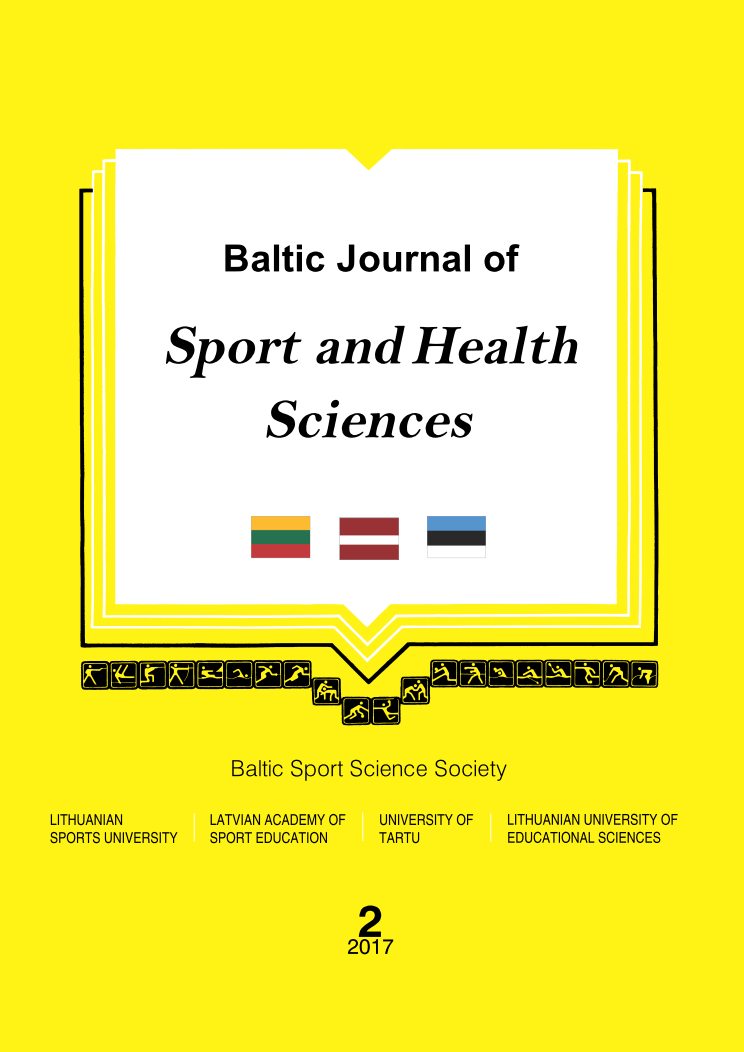Functional Physical Fitness in 7–10-Year-Old School Children in Lithuania. Pilot Study
Abstract
Background. Physical fitness in childhood is a marker of health as it reflects the functional status of most the
body functions involved in the performance of daily physical activity and/or physical exercise. Measurement and
monitoring of these indicators of health beginning from early age is of highest importance. So, the aim of this study
is to examine physical fitness in primary school children and test the validity of physical fitness test battery .
Methods. A sample of 415 children participated in the study. Physical fitness was measured by the 9-item test
battery (Fjørtoft et al., 2011). ANOVA results show that indicators of physical fitness differ across age. In general,
older children are more physically fit than the younger ones. Mastering preschool and primary school children’s
physical fitness evaluation techniques will allow monitoring the changes in physical fitness in the course of the
school year in different age groups.
Results. In this study we presented the baseline data of a longitudinal study of 7–10-year-old children in
Lithuanian schools. We found a development of achievements in physical functional physical activity across age,
the 9–10 years olds being the fittest. We found a pronounced gap in the performance between the age groups of 8–9
years, while the 7–8-year-olds seemed to be more even in their functional fitness competency. The same achievement
pattern also was characteristic of boys and girls. Gender differences were found in one test item only (throwing
tennis ball), which was explained by different play cultures in boys and girls.
Conclusion. Our results indicate a stronger focus on the modernization of physical education programs for
children in this age group, particularly for the 8-year-olds. The PE programs should be based on a multivariate
sample of basic motor skills of all ages aiming at developing the children’s overall functional physical fitness.
Keywords: functional fitness; primary schoolchildren; physical activity.
Downloads
Published
Issue
Section
License
Copyright (c) 2018 Baltic Journal of Sport and Health Sciences

This work is licensed under a Creative Commons Attribution 4.0 International License.






